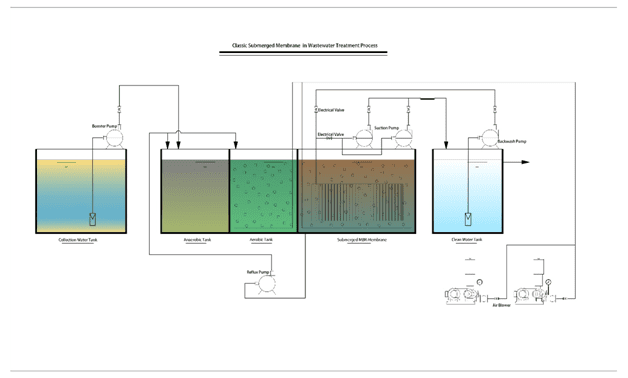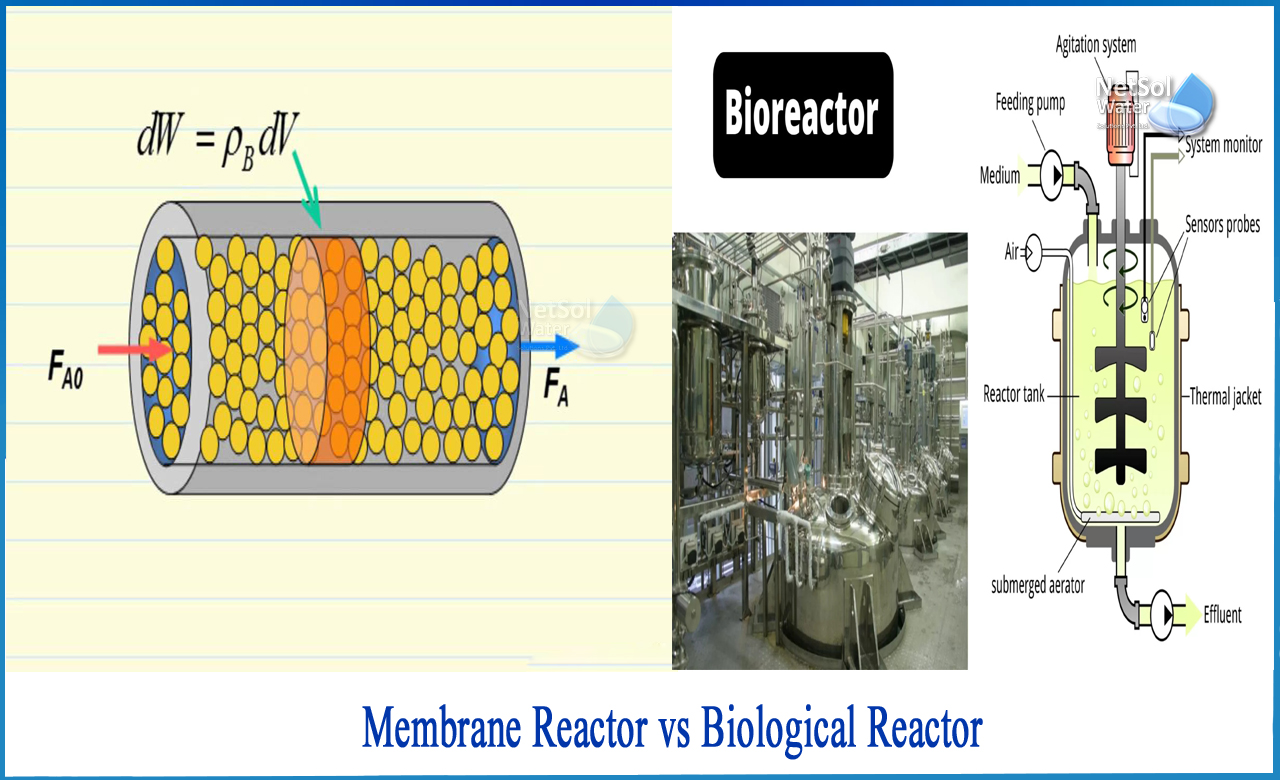Future Trends in Membrane Bioreactor Technology and Its Global Impact
Future Trends in Membrane Bioreactor Technology and Its Global Impact
Blog Article
Exactly How Membrane Bioreactors Are Reinventing Water Purification Equipments
The emergence of membrane bioreactors (MBRs) represents a significant advancement in the field of water filtration, merging biological therapy procedures with advanced membrane layer purification technologies. This combination not just enhances the high quality of dealt with effluent but likewise addresses urban room restraints, making MBRs especially ideal for densely populated areas. As international water shortage intensifies, the function of MBRs in assisting in safe and clean water reuse and sustainable water management comes to be increasingly crucial. The ramifications of this innovation extend past efficiency-- what difficulties and possibilities exist ahead for its extensive execution?
Summary of Membrane Bioreactors
Membrane layer bioreactors (MBRs) represent a significant advancement in water filtration modern technology, as they integrate biological treatment processes with membrane purification. This assimilation improves the performance of wastewater therapy by using microorganisms to degrade organic pollutants while at the same time utilizing semi-permeable membrane layers to different cured water from put on hold solids and virus.
The MBR system commonly includes a biological reactor where the microbial population metabolizes contaminants, followed by a membrane filtration device that retains biomass and permits only clean water to pass through. This dual functionality causes greater effluent high quality contrasted to traditional therapy methods. MBRs can be operated in both batch and continuous flow modes, providing flexibility in design and application.
In Addition, MBRs are characterized by their portable footprint, making them ideal for metropolitan settings with space restraints. Membrane Bioreactor. They also allow the healing of water for reuse, hence adding to water sustainability campaigns. While MBR modern technology has gotten appeal in commercial and community applications, its functional intricacies and energy needs demand cautious consideration during execution. On the whole, MBRs go to the center of boosting water treatment effectiveness and top quality, showcasing the potential for innovative solutions in ecological monitoring.
Advantages of MBR Modern Technology
The combination of organic therapy with membrane layer purification offers numerous benefits for water purification procedures. Among the primary advantages of Membrane Bioreactor (MBR) modern technology is its capability to successfully eliminate both inorganic and natural contaminants, causing premium effluent. The membrane layers serve as a physical barrier, protecting against put on hold solids and microorganisms from travelling through, which enhances the overall safety and integrity of treated water.
In addition, MBR systems need a smaller footprint contrasted to traditional treatment approaches, permitting a lot more efficient area utilization. This small layout is particularly helpful in urban setups where land is restricted. MBRs likewise show operational versatility, suiting differing influent top qualities and circulation prices without significant performance destruction.
Additionally, the process provides enhanced nutrient removal abilities, specifically for nitrogen and phosphorus, which are crucial for avoiding eutrophication in obtaining waters. The reduced sludge production connected with MBR technology likewise converts to lower disposal costs, making it an affordable solution in the long run - Membrane Bioreactor. In general, the advantages of MBR modern technology placement it as a leading selection for innovative and sustainable water purification systems, attending to both ecological and financial problems
Applications in Water Purification
Applications of Membrane Bioreactor (MBR) innovation in water purification are varied and impactful, resolving numerous therapy needs throughout multiple industries. MBRs properly incorporate biological treatment procedures with membrane purification, making them perfect for local wastewater therapy, industrial effluent monitoring, and also safe and clean water reuse initiatives.
In metropolitan settings, MBRs are significantly employed to improve the top quality of treated wastewater, enabling compliance with rigorous discharge guidelines and assisting in the recycling of water for irrigation and non-potable uses. Their small style also makes them suitable for urban environments where room is restricted.
Industrially, MBR technology is made use of to deal with procedure water and wastewater, especially in fields such as food and beverage, drugs, and fabrics. By effectively eliminating pollutants and put on hold solids, MBRs aid markets decrease ecological effects while recouping beneficial resources from wastewater streams.
Furthermore, MBRs are getting traction in decentralized water therapy applications, where small-scale systems can be deployed in remote locations or creating areas. This flexibility allows communities to accomplish sustainable water management options, enhancing accessibility to clean water while lowering reliance on traditional read this treatment approaches.
Study and Success Stories

In an additional example, a textile this page manufacturing facility in Bangladesh adopted MBR modern technology to resolve its wastewater difficulties. The system decreased chemical oxygen need (COD) degrees from 1,200 mg/L to much less than 100 mg/L, thus meeting regulatory criteria and dramatically decreasing environmental influence.
The University of Cape Town's MBR installment has shown efficient in dealing with greywater for non-potable reuse on campus. This task not just conserves potable water but also acts as an instructional design for sustainable practices.
Furthermore, a fish and shellfish handling plant in Norway used MBR technology to treat effluents including high degrees of raw material, achieving over 90% pollutant removal. These instance studies emphasize MBR innovation's adaptability and its essential function in boosting water high quality throughout diverse applications.
Future of Water Therapy Solutions
As worldwide water scarcity and pollution obstacles intensify, innovative water treatment remedies are coming to be increasingly necessary to make certain sustainable access to clean water. The future of water treatment depends on the combination of advanced technologies that boost the performance and effectiveness of filtration processes. Membrane bioreactors (MBRs) go to the leading edge of this evolution, integrating biological therapy with membrane filtration to generate top quality effluent appropriate for different applications.

Emerging trends such as resource recuperation from wastewater, consisting of nutrients and energy, will better transform treatment facilities right into eco-friendly centers. Additionally, advancements in nanotechnology and membrane layer products assure improved efficiency and longevity of filtering systems.

Verdict
In conclusion, membrane layer bioreactors stand for a considerable advancement in water filtration modern technologies, properly integrating organic therapy with innovative membrane filtration. The countless benefits, including enhanced effluent high quality and minimized spatial requirements, make MBRs particularly ideal for city applications. Their role in potable water reuse and lasting water monitoring highlights their value in addressing worldwide water deficiency challenges. Continued study and development will even more improve the efficacy and fostering of MBR technology, guaranteeing a resistant future for water treatment solutions.
The development of membrane layer bioreactors (MBRs) stands for a significant advancement in the field of water filtration, merging biological therapy procedures with advanced membrane layer filtration modern technologies. As global water shortage heightens, the function of MBRs in helping with potable water reuse and lasting water monitoring comes to be significantly vital. They additionally enable the recuperation of water for reuse, therefore adding to water sustainability campaigns.As global water deficiency and pollution challenges intensify, cutting-edge water treatment solutions are becoming significantly vital to make certain sustainable access to clean water. Their function in potable water reuse and sustainable water management highlights their value in addressing global water shortage obstacles.
Report this page